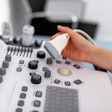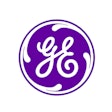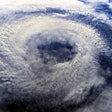Adapting 2-D echo
Freehand 3-D echo
The Volumetrics approach
Improving 3-D performance
Most agree, moreover, that whatever format 3-D echo ultimately assumes, its most important contributions are likely to be in quantification of left ventricular function, stress echocardiography, and real-time monitoring during surgery.
However, feasibility studies of 3-D echo -- which determine whether promising technologies work in experimental settings -- have yet to be backed up by clinical validation studies, which would assess their appropriateness for day-to-day patient care.
Because few cardiologists agree on what form 3-D echo technology may take, factions have developed that hold remarkably antagonistic views.
"Ideally, you could put a transducer on one site and get signals in a 3-D format," said Dr. Natesa Pandian, director of cardiovascular imaging at Tufts-New England Medical Center in Boston. "There's clearly a need for that, particularly for guiding interventional electrophysiology procedures. 3-D echo also promises quantification of the chamber wall and ejection fraction." (Ejection fraction, an important cardiac assay, measures left-ventricle function by determining what portion of the full chamber's blood is pumped out by each contraction.)
The battle lines have been drawn around two very different approaches. On one side are cardiologists who adapt existing 2-D echo to achieve virtual 3-D results. The basic problem to be solved here is that, without spatial orientation of some kind, the image-processing computer cannot relate the hundreds of ultrasound scans to each other in order to process the images in a 3-D context. Such difficulties are complicated by the necessity of scanning only during part of the respiratory cycle, and by the interference from the ribs that occurs in transthoracic techniques.
Using 2-D gear to get 3-D results, then, entails scanning from different locations (to minimize the impact of obstacles such as the ribs, and to provide different perspectives) while spatially locating the transducer so the computer can relate its readings to each other and successfully reconstruct them as 3-D. Most existing systems fit this category. The primary differences lie in how the sonographer orients the transducer (e.g., by freehand, rotational, or parallel methods) and in whether the data shows up primarily as pictures (usually the case) or as numbers.
Pandian stands firmly in this camp; he and his team use a TomTec system. "With TomTec you can use different modes of data acquisition, but rotational is the most popular," he said. "Once the data is acquired, you can create a 3-D image in one to three minutes. Across the world, the TomTec approach is probably the most popular."
Pandian said he and his colleagues have used 3-D echo with color Doppler to do reconstructions of flow jets and of anatomic structure and physiology, including cardiac perfusion (Am J Cardiol, June 1998, Vol. 81:12A, pp. 96G-102G).
"We've shown that you can depict the normal perfused area and the ischemically infarcted area by combining contrast echocardiography and 3-D imaging," Pandian said. His team has also used the technology to study tissue velocity.
Other 3-D experts dispute this approach, however. "TomTec isn't going to work," said Dr. Neil Weissman, director of echocardiography at the Cardiovascular Research Institute at Washington Hospital in Washington, DC. "It's been around for years and it just hasn't flown." Weissman believes that if 3-D echo has a future, it lies in the kind of technology pioneered by Volumetrics, a small start-up based in Durham, NC. The company's technology is further described below.
Another adapted 2-D methodology -- probably the first -- was pioneered roughly 25 years ago by Dr. Donald King, professor of echocardiography at Columbia University College of Physicians and Surgeons in New York City. In "freehand" 3-D echo, as King calls it, the transducer is fitted with a spatial locator that allows the sonographer to move it wherever he or she deems fit, rather than being locked into the constraints imposed by rotating it in precise increments from a fixed position (Am J Card Imaging, Sept. 1993, Vol.7:3, pp. 209-220).
"As a result, we know where every picture is taken, and what their relationships are to each other," King said. "We feed all that information into the computer and process it, then extract 3-D models or pictures of the heart from that database."
King developed his system specifically for quantitative ventriculography, which he calls "90% of the value of 3-D echo," because the left ventricle's critical function -- ejecting the blood -- is most often compromised in heart attacks. Using his system, King can measure ventricular muscle volume, mass, and ejection fraction, then monitor changes over time in ill or recovering patients (J Am Coll Cardiol, Nov. 1, 1992, Vol. 20:5, pp. 1238-45; ibid., July 1993, Vol. 22:1, pp. 258-70; ibid., Sept. 1997, Vol. 30:3, pp. 358-362; Circulation, Aug. 15, 1995, Vol. 92:4, pp. 842-853).
"We can trace the margins of the ventricle, the endo- and epicardiums, when it's full and when it's empty," King said. "The computer recreates the surface we've traced."
King's system would also be helpful in monitoring a number of chronic conditions, he believes, including significant mitral valve regurgitation and high blood pressure.
"Specialists are now realizing that it's not enough to say we're controlling patients' blood pressure," he explained. "High blood pressure causes hypertrophy of the left ventricle, which is clearly associated with increased morbidity and mortality. I have high blood pressure, and I'd rather follow my left ventricular mass than my blood pressure."
King specifically designed his system to produce numbers, not images. "What's important is not the medium -- the pictures -- but rather the message, and that's in the numbers," he said. "There's been some debate about this. I'd say you need both, but in a ratio of 90:10, numbers over pictures."
"Don King's thing is not really 3-D echo," said Pandian. "You want to see a picture. Don says quantification is more important, but people don't want to buy something just to get some numbers."
You're probably starting to get the picture (or the numbers, if you prefer): All is not peaceable in the kingdom of 3-D echo.
If anyone approaches the position of diplomat in this debate, it may be King's colleague, Dr. Aasha Gopal, director of echocardiography at New York Hospital Center in Queens.
Sidestepping questions about competing technologies, she describes a number of additional benefits offered by 3-D echo in general, regardless of how it's delivered. One is the ability to more fully visualize and reconstruct heart structures such as the mitral valve.
"If the surgeon was planning to repair the valve rather than replace it, you could take all those images and space them closely into a virtual movie," Gopal said. "You'd know how the valve was functioning in vivo before the patient underwent anesthesia."
In a related vein, using 3-D echo in conjunction with color-flow Doppler could offer a better model of regurgitative jets. "Jets are very complicated," Gopal said. "Being able to reconstruct them in 3-D may allow us a more accurate picture of how much a valve leaks."
Another promising application of 3-D echo, as mentioned, is in stress echocardiography, where the patient has one echocardiogram, then walks the treadmill, then repeats the echo.
"In the regular stress test all you get is an EKG," Gopal said. "Using 3-D echo you can also detect wall motion abnormalities. You have to be fast, though, because the heart rate drops quickly when the patient gets off the treadmill."
It is when the issue of speed arises that the conversation invariably turns to technology developed by Volumetrics.
"The kind of technology Volumetrics has is the way to go," said Washington Hospital's Weissman. "It allows you nontraditional views of the heart that are not obtainable due to anatomic limitations."
Volumetrics uses either a 2.5- or 3.5-MHz transducer to acquire a 3-D pyramid of data containing 4,096 lines, versus the usual flat 128-line pie wedge produced by 2-D echo. Cardiologists at several institutions have expressed enthusiasm about the new technology (Am J Cardio, Dec. 15, 1999, Vol. 84:12, pp. 1434-1439; J Am Soc Echocardio, May 1999, Vol. 12:5, pp. 285-289; ibid., Jan. 1999, Vol. 12:1, pp. 1-6). Nevertheless, it is still in the early stages of proving itself in the clinical setting, and several problems persist.
"The main disadvantage right now is lack of resolution," Gopal said. "You still have to cut up that 3-D image into 2-D ones to make sense of it."
Nevertheless, Gopal acknowledges that the technology has tremendous potential. Because it collects a full data set in just one heartbeat, it has obvious applications in tests where data must be collected quickly, such as stress echo. She also notes that in busy labs such as hers, a Volumetrics machine would dramatically increase patient throughput.
"For productivity, it would be great," she said. "If the resolution were as good as the state of the art we have in 2-D, I think they'd sell like hot cakes."
It's a big "if." Whether that resolution will actually improve remains to be seen, and King of Columbia University has his doubts.
"The Volumetrics technology has significant limitations," he said. "Image quality is nowhere close to that of conventional scanners, and it's probably going to stay that way because of the physics of it."
At Volumetrics, marketing manager Mike McElroy admits that the company is working to address such concerns. Volumetrics has had a rough go lately, restructuring and laying off staff when a planned round of additional financing didn't pan out last December. Most hospitals couldn't justify purchasing the machines, moreover, because so far they haven't come with an option for continuous-wave Doppler -- a shortfall the company is fixing.
To address issues of image quality, McElroy said, "we're improving the conventional 2-D capabilities of the instrument."
Of course, this doesn't resolve whether the company will muster the financial and technological wherewithal to address its detractors' most serious complaint. McElroy, like any good marketing manager, accentuates the positive.
"It's a paradigm shift to what this machine will do," he pointed out. "It's akin to what happened 20 years ago when people moved from M-mode sonography to 2-D. People didn't jump right on the bandwagon."
Some clinicians have developed ways to mitigate the shortfalls of Volumetrics' technology. One is Dr. Masood Ahmad, director of the echocardiography lab at the University of Texas Medical Branch at Galveston.
Ahmad and his colleagues have studied the Volumetrics system in stress echo and achieved what he considers extremely positive results, largely due to faster acquisition times.
At the UT echocardiography lab, several hundred patients underwent initial echocardiograms, received dobutamine to induce pharmacological stress, then repeated the echoes.
"With just one acquisition we have multiple views of the left ventricle, and we can detect wall motion abnormalities," Ahmad said. "We've found this technique quite sensitive at detecting coronary artery disease."
Ahmad has found that the Volumetrics system has a higher sensitivity for finding coronary artery disease versus conventional stress echo (though the differences did not reach statistical significance). He also believes that Volumetrics' inferior image quality is offset by the advantages of rapid acquisition. Moreover, he and his team have found they can significantly improve the images by using a contrast agent, Optison from Molecular Biosystems of San Diego.
"The Optison (contrast agent) enhances the definition of the left ventricle's borders and cavities," he said. "We think that in the future (Volumetrics) will be the technique of choice for assessing coronary artery disease."
At the National Institutes of Health, Dr. Julio A. Panza has conducted studies that support this view by comparing Volumetrics echocardiography with MRI scans.
"We've done both animal and human studies and found excellent correlations" between the technologies, Panza said. But even he acknowledges that the Volumetrics images aren't as good as those obtained from 2-D echo.
"It has some limitations," he said, "but we feel it's very useful for quantitative assessment of left ventricular volume and function."
Because the Volumetrics machines thus far are limited to academic and research institutions, one wonders whether the average community hospital may soon choose to buy into systems costing $250,000-$300,000 a pop, depending on the options ordered. Will the cost, coupled with concerns about quality and versatility, keep Volumetrics confined to the ivory tower for the foreseeable future?
"I believe so," Panza said. "If the image didn't improve, it would be a significant limitation for its use in community hospitals." Panza added that the new 3.5-MHz transducer and use of contrast agents have significantly improved his team's images, however.
Whether or not Volumetrics ultimately proves to be the company that fulfills 3-D echocardiography's promise, cardiologists can still dream.
Natesa Pandian sees several opportunities on the horizon as both ultrasound technology and computation grow more powerful.
"I'd like to be able to see a 3-D image of a beating heart, in real time, incorporating a depiction of its electrical activity," Pandian said. "3-D echo could be a multimode, multiparametric, multidimensional imaging methodology. Once you have the 3-D data, you could incorporate virtual reality, holography, and physical reproductions of a patient's heart for communication, teaching, or rehearsing corrective procedures."
Listen up, industry wonks. The problems -- and the visions for change -- are clear. It's in your court.
By Cary Groner
AuntMinnie.com contributing writer
May 2000
Let AuntMinnie.com know what you think about this story.
Copyright © 2000 AuntMinnie.com

















